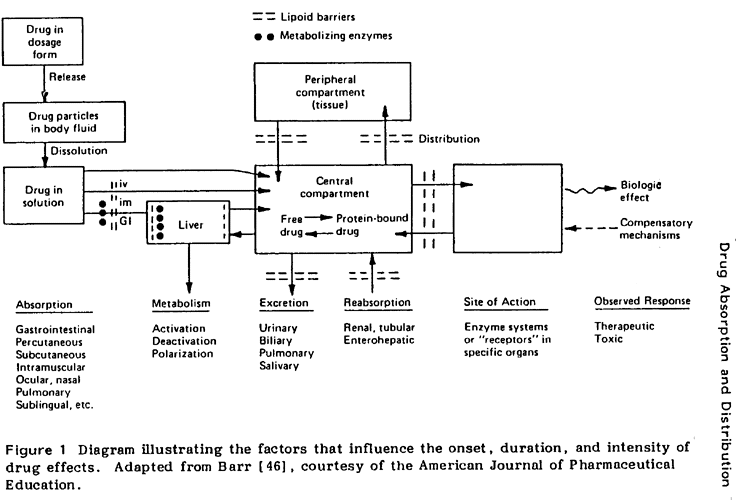 |
 |
|
Pharmacokinetics is the study of the movement of drugs through the human system, from their introduction by ingestion, injection, or other means, to elimination through excretion or metabolism. It makes heavy use of compartment models as found in many differential equations textbooks. Since almost all students take medications from time to time, pharmacokinetics models are something they can easily relate to. For convenience many drugs
are taken orally in the form of tablets. With some exceptions,
*The very clear and concise
definitions above are from Spitznagel (see CKM Absorption
|